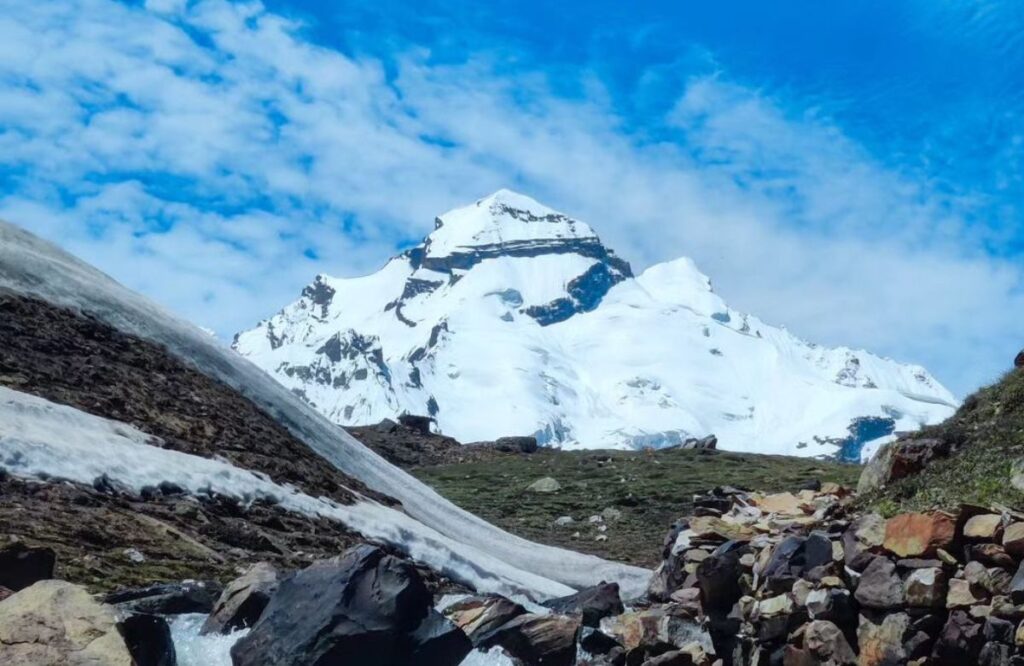The pyramid-shaped sacred peak, Mount Kailash, transcends its physicality as more than just a mountain; it is the revered dwelling place of Lord Shiva, deemed unattainable by ordinary mortals. This majestic elevation, beyond the reach of airplanes but traversable by birds, serves as the axis mundi – the world’s center and navel, as evident in Google Maps and NASA images.
Situated in the remote South-West corner of Tibet within the Himalayan Mountain Range, Mount Kailash is acknowledged in Hindu tradition as Shiva’s abode, where he resides with his consort Parvati and their divine offspring, Ganesha and Kartikeya. NASA scientists even claim to discern ‘the face of Lord Shiva’ on this sacred peak.
In a remarkable feat, the Buddhist monk Milarepa, renowned for his spiritual prowess, stands as the sole living person to have ascended the sanctified Kailash Parbat. Upon his return, he vehemently cautioned against attempting the climb, asserting that it disturbs the divine presence atop the summit.
Adding to the mystique, Mount Kailash is said to change its position periodically, leading climbers astray and confounding attempts to unravel this enigma. Viewed from the southern ridge, the mountain reveals the Hindu OM (ॐ) symbol, crafted by massive ice troughs and horizontal rock formations. An unseen force seemingly bars aircraft from proceeding beyond a specific elevation.
At the mountain’s base lie two captivating lakes – Lake Mansarovar and Rakshas Tal. Mansarovar, situated at an altitude of 14,950 feet, holds the distinction of being the world’s highest freshwater body, while Rakshas Tal boasts salty water, devoid of aquatic flora and fauna. Mansarovar’s circular shape symbolizes solar forces, while Rakshas Tal’s crescent form signifies lunar forces. Pilgrims from Hinduism and various religions consider the sacred lake Mansarovar a site of purification, where bathing and consuming its holy waters absolve sins.
Legend has it that Mount Kailash serves as the source of four rivers – Brahmaputra, Indus, Sutlej, and Karnali. Each cardinal direction of the mountain features the visage of a different animal, giving rise to the rivers: Ashwamukh in the East, an elephant face in the West, a lion face in the North, and a peacock face in the South.


